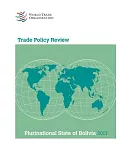Financial crises have been pervasive for many years. Their frequency in recent decades has been double that of the Bretton Woods Period (1945-1971) and the Gold Standard Era (1880-1993),
comparable only to the period during the Great Depression. Nevertheless, the financial crisis that started in the summer of 2007 came as a great surprise to most people. What initially was seen
as difficulties in the U.S. subprime mortgage market, rapidly escalated and spilled over first to financial markets and then to the real economy. The crisis changed the financial landscape
worldwide and its full costs are yet to be evaluated.
One important reason for the global impact of the 2007-2009 financial crisis was massive illiquidity in combination with an extreme exposure of many financial institutions to liquidity needs
and market conditions. As a consequence, many financial instruments could not be traded anymore, investors ran on a variety of financial institutions particularly in wholesale markets,
financial institutions and industrial firms started to sell assets at fire sale prices to raise cash, and central banks all over the world injected huge amounts of liquidity into financial
systems.
But what is liquidity and why is it so important for firms and financial institutions to command enough liquidity? This book brings together classic articles and recent contributions to this
important field of research. It is divided into five parts. These are (i) liquidity and interbank markets; (ii) the public provision of liquidity and regulation; (iii) money, liquidity and
asset prices; (iv) contagion effects; (v) financial crises and currency crises. The aim is to provide a comprehensive coverage of role of liquidity in financial crises.





















